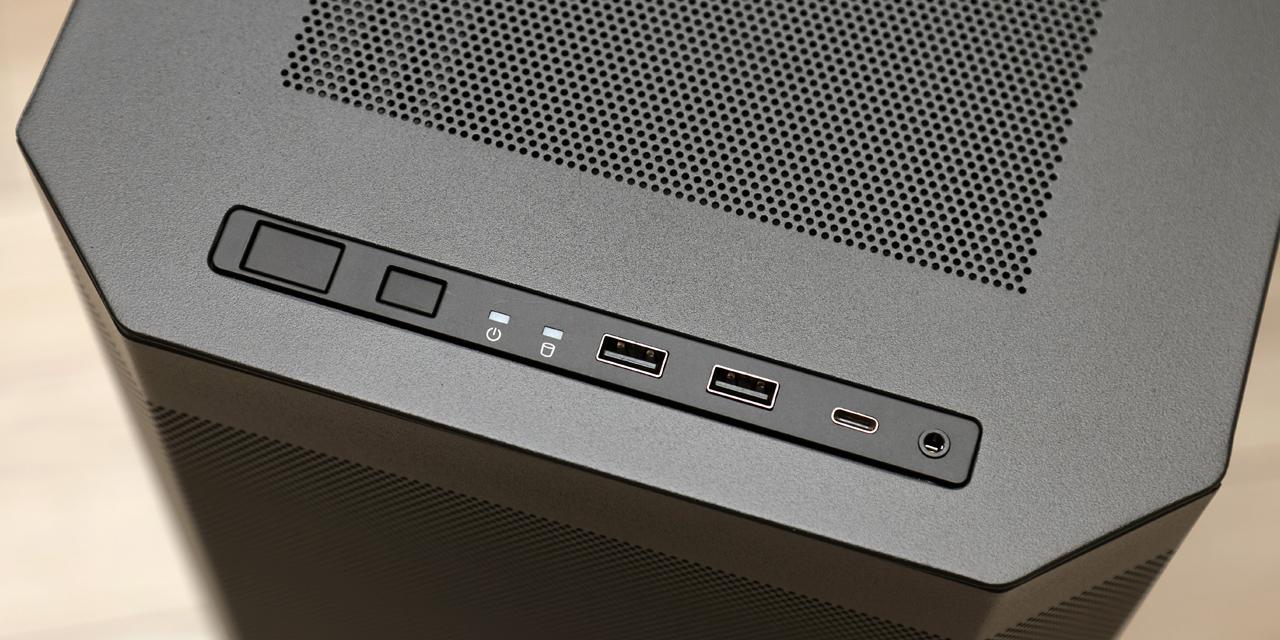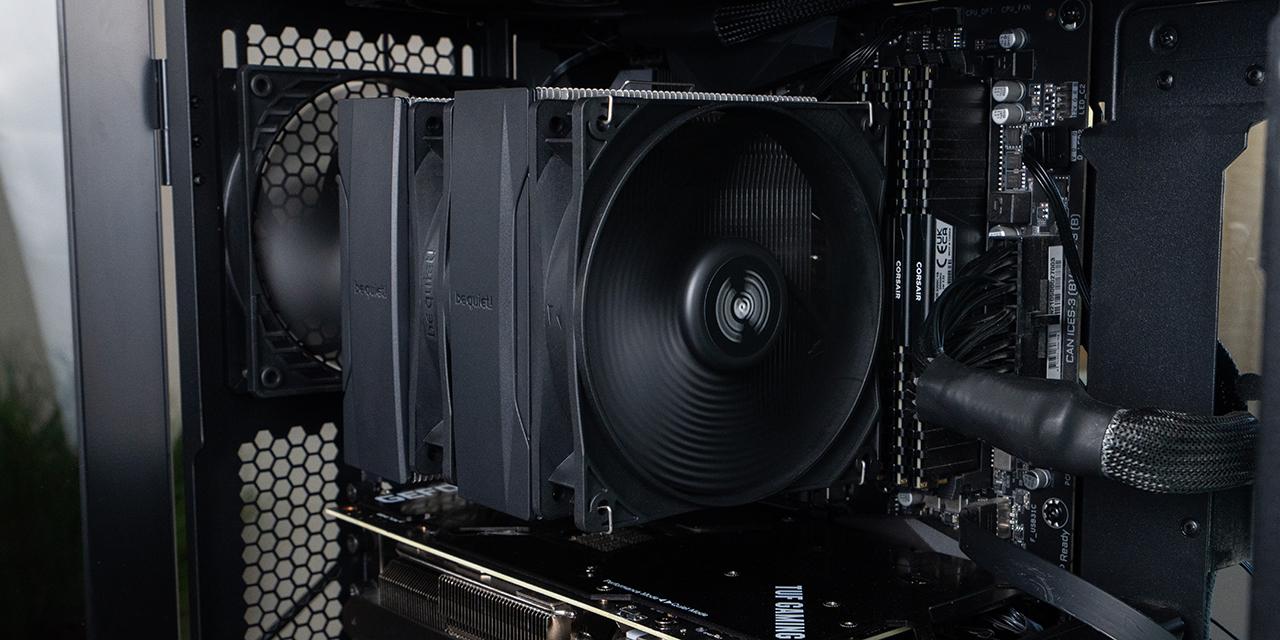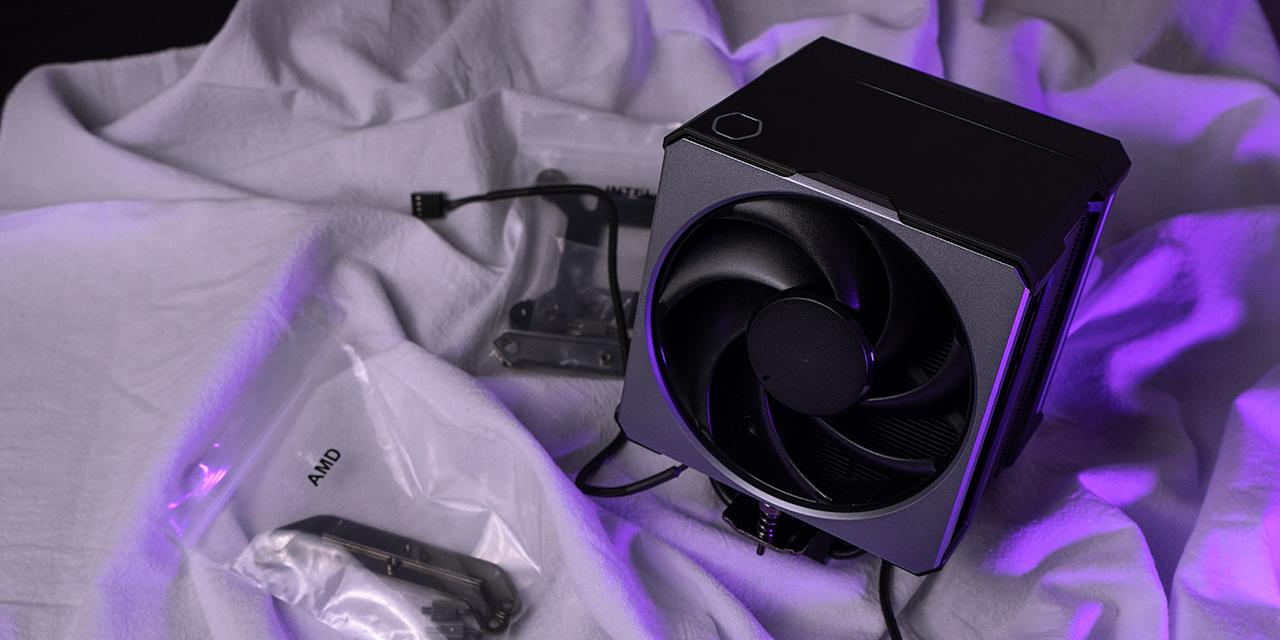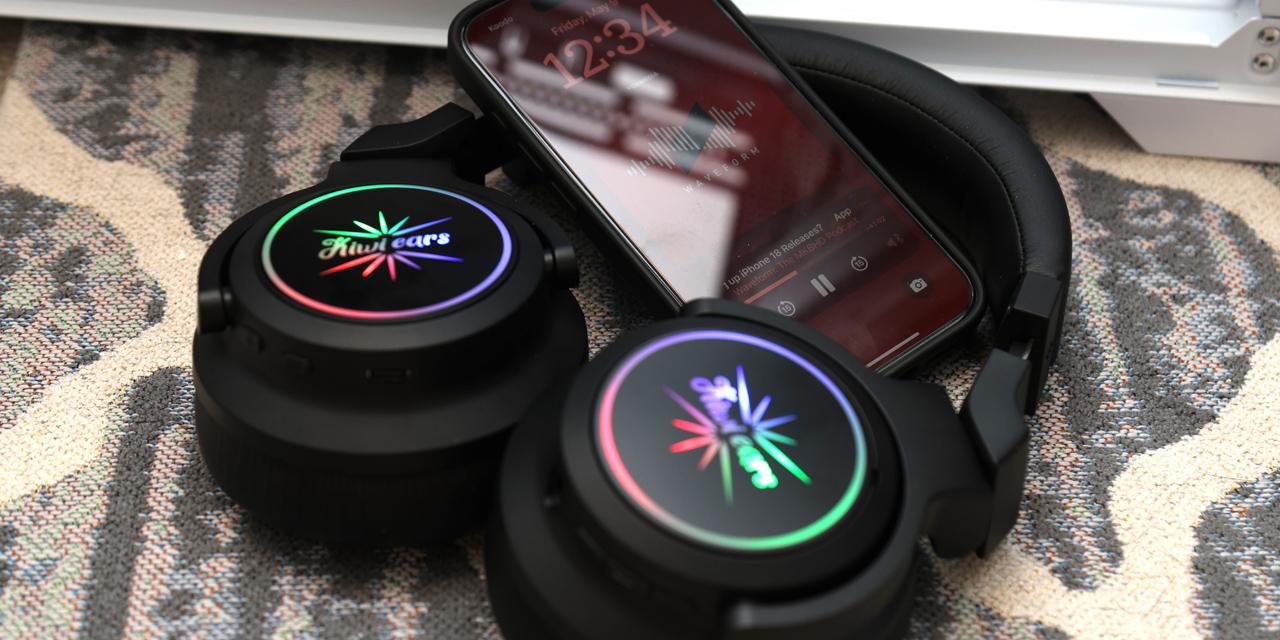By: Jonathan Kwan
Gaming tests by Tysei Luong
May 13, 2006
Headphones. Gaming. LAN parties. Don't they just all seem to come together ever so naturally? Just as you wonder, there is a reason why headphones cannot separate themselves from games, especially first person shooters. These over-your-head pieces of sound equipment are there to assist you in pinpointing your opponents; microphones are usually included in the box as well for you to communicate with your teammates accordingly. Doesn't that sound like a killer combination to you?
While we have a general idea of headphones providing a more enhanced and entertaining gaming experience, it's the good gaming headsets that truly allow you to "pwn some noobs". After reviewing the so-called "wall hacker" SteelSound 5H a few weeks back, we got our hands on another pair of high-end gaming audio device -- the Everglide s-500 "Professional Gaming Headphones".
Our review unit came in a large box from UPS with a huge hole on top. It seems to me that it has been punched or ripped open, and left outside at my front door for approximately nine hours. Good thing nothing was stolen and everything is fine within the box!
Our white Everglide s-500 review unit came in nice retail packaging in a box with detailed information printed on its sides. Technical specifications are shown as well; with the following information provided:
Transducer: Dynamic
Nominal Impedance: 16 Ohm
Max. Sound Pressure Level (SPL): 102 dB
Max. Power Rating: 100 mW
Weight w/o Cable: 360 g
Cable Length: 3.1 m
Frequency Response: 20 Hz ~ 20 kHz
Right out of the box is the Everglide s-500 headphones, a separate clip-on microphone as well as a large drawstring bag for transport purposes. This is very useful and definitely a necessity for safe transport of your equipment to events such as LAN parties.
Also included is a microphone in which you can use to clip onto your shirt. I find this very convenient during use as it does not get into view, but having the mic as a separate accessory instead of integrating it with the headset itself may not be appealing to all users. Carrying an extra accessory around has a greater chance of losing it, and running an extra loose wire around may not exactly be a good thing. There is no on/off switch on the mic, which adds more convenience to the end user if it was there.
In terms of looks, Everglide's s-500 looks very 'professional' and has many visual similarities to studio headphones. It looks and feels much more solid and well built than the SteelSound 5H; unfortunately these headphones cannot be dismantled nor folded to maximize portability like the SteelSound 5H.
The Everglide s-500 headband design is very different than those of SteelSound 5H's. Instead of having a narrow piece of plastic with thick foam attached underneath it, Everglide's s-500 has a wide and light leather wrapped headband with a comfortable amount of foam filling. When weight is spread over a larger area, less pressure can be felt per square unit. Because of this, I found the Everglide s-500 much more comfortable after long periods of usage without having feeling any fatigue at the top of my head where the headband rests. The Everglide s-500 are very, very comfortable headphones; its comfort is by far more superior to the SteelSound 5H.
A snap at the large oversized cups. By saying oversized, I really mean it! These cups are by far one of the largest we've seen in gaming headphones. Good news: It still retains its lightweightness.
The excessive amount of leather and filling which makes the cups physically large are used in attempt for blocking out external noise ("Noise Isolation"). Noise isolation is important in loud environments, especially if you are in a LAN party with less than optimal noise levels.
While we like the idea, it seems to everyone over here at APH Labs that it's not very effective at all. During our tests, the only noise it's actually effective at blocking is the noise generated by fans inside my computer, which sits approximately two meters away from our testing station. The Everglide s-500's noise isolation is defenceless against anything louder in volume, or has a higher frequency such as voices. It is a definite fact that these headphones are better than the SteelSound 5H in terms of blocking noise, but still not as much as I have hoped for in headphones with such design.
The biggest design flaw of the Everglide s-500 lays here. In its slide adjustment area above both cups are wires sticking out. I do like their single cable design that runs from the sound source to its left cup only, but wires sticking out like that are simply unacceptable. Continually adjusting the cups will worn out or damage these wires. In addition to that, cutting them accidentally is not all too farfetched either. If you cut either of these wires, it will prevent Everglide s-500's right cup from working. It would have been better if they used solid-state connectors hidden within the headband and cups like SteelSound 5H's implementation.
I noticed that the Everglide s-500's wires are especially thick and long at 3.1 meters, which should be enough for most people. There was no volume control module like majority of gaming headphones manufactured today. However, I really like the cable's firm feel and grey color, along with its gold plated connector looks high end and unlikely to get tangled. Our photo above compares Shure E2c's cable (Left) with Everglide s-500's (Right). We'll expect some nice response times and audio performance with these cables!
Speaking of response times, it is one of the biggest highlights of Everglide's s-500 headphones. Their Fall 2005 press release indicates the drivers of this headset utilizes a biocellulose membrane.
UPDATE: Jan over at Everglide contacted us on updated technical details of the s-500 that has been changed after their Fall 2005 press release:
The ultra-light membrane is a molded from a very thin piece of PVC membrane. This allows for high SPL. Usually, if the sheet is thin, this will result in distortion at certain frequencies, but our membrane is designed with ridges in the membrane giving it a firmer structure.
So what the heck is biocellulose, and what's the significance of having it in a pair of gaming headphones? We are typically very familiar with plant cellulose in Biology, but biocellulose (Produced by bacteria) are structurally different than plant cellulose. Due to its physical specifications and shape, biocellulose membranes has very unique characteristic in sound reproduction: fast response time.
After some research, we gathered and extracted some information and assembled it in our chart below:
Biocellulose technical information chart
As you can see in our table above, biocellulose diaphragms can transmit sound as fast as aluminium, despite its high Young's coefficient and internal loss like paper diaphragms. Basically, the idea of Everglide's s-500 is fast sound reproduction for instantaneous sound response in games, and by using biocellulose for its membrane, engineers and designers at Everglide has taken good advantage of what's needed to make some good gaming headphones with fast response times.
The Tests
Tests for these headphones will be separated into two different categories: Gaming performance and entertainment (Music and movies). Since these are gaming headphones designed specifically for gaming, gaming performance rating will be weighted much higher than music and movies performance; which music and movies performance should only be taken for reference purposes only.
As in our previous tests, I will take a look at movie and music performance while Tysei (ty8131990 from our forums) will be going over its gaming performance. Before lending Tysei the headphones for testing, I completed the music and movie performance tests. My entertainment tests were ran with the following equipment:
- My computer (Creative Sound Blaster Audigy 2; Custom EQ on)
- Creative Zen Micro 6GB (Custom EQ on)
During my music tests, I was pretty surprised about Everglide s-500's bass performance. The bass wasn't very responsive, therefore did not create a 'subwoofer effect' like our SteelSound 5H. In some cases, it sounded artificial to a point it's muddy. As a even bigger surprise, even the Shure E2c has better bass. However, the Everglide s-500 sounds much more three-dimensional than the Shure E2c, creating a reasonably good surround sound effect (Although not as good as the SteelSound 5H), which is what we are looking for in gaming.
Midrange is very important in music. Since these are gaming headphones, it's no surprise that midrange is lacking. In my full-instrumental music tests, instruments did not sound impressive at all, again due to its lack of midrange. At the same time, we noticed that there is a treble stress going on, although frequencies did not go as high as we hoped (Treble performance trailed behind SteelSound 5H, even though the SteelSound 5H had less than impressive treble). In addition to that, treble and midrange wasn't very 'clean'. Going through other genres of music, voices of singers in general sound flat and dry due to Everglide s-500's treble stress and lack of midrange. I must note that midrange performance on the Everglide s-500 are better than SteelSound 5H's.
In my movie tests, voices did sounded slightly on the flat and dry side but still acceptable performance. Sound effects (Booms and bangs) in movies were generally good, but not as impressive as the SteelSound 5H. Ear fatigue wasn't an issue -- after playing six hours of Counter-Strike: Source last week and watching Oilers versus San Jose on Wednesday, May 10th (Wow, three overtimes!) on my computer with a TV tuner card, my ears weren't tired at all.
After going through my music and movie tests, I handed Tysei these headphones for his gaming tests. Gaming performance analysis were done on computer with the following specifications:
AMD Athlon 64 4200+ X2
Shuttle FN25 motherboard (nForce4 chipset)
OCZ EL Platinum 2x1GB 2-3-2-5 @ stock
ATI Radeon X800XL 256MB
NEC 3540A Multiformat DVD Burner
Shuttle SN95P barebone
---
SteelSound 5H USB Soundcard (For SteelSound 5H only)
Via Envy24 Audio Processor (Everglide s-500 tests)
After a few days of testing, I did a little online interview with Tysei to see what he thinks of the Everglide s-500.
Me: What do you think of the treble, midrange, and bass reproduction on the s-500?
Tysei: The bass is slight or not at all evident. You don't get the "Shotgun" feeling when you shoot with the M3 in a FPS game such as Counter-Strike: Source. The midrange was just right for gaming purposes; footsteps were clearly heard. Treble, once again was "dry" and didn't reproduce the realism of a *crack* rifle shot.
Me: How about frequency separation between bass, treble and midrange?
Tysei: Frequency separation was well done, each sounds were well separated, allowing me to distinguish the unique sounds in the game.
Me: The Everglide s-500 is designed specifically for gaming purposes. Do these headphones sound "3D" enough for gaming purposes, for the user to tell the exact location of his or her's opponents? Did they really help you out in games?
Tysei: Once again, there was not enough real bass or treble to give me the 3D/realistic feeling, however I was able to tell the locations and what weapons each person was using at a relatively accurate distance. They definitely helped me out in games, as the more "important" sounds such as gun shots, footsteps, reloads were heard clear, so having accentuated frequencies were a "pro" than a "con" in terms of gaming.
Me: Do you like how the microphone can be clipped onto your shirt, and its performance?
Tysei: The microphone was well placed, normal headsets have them right under or in front of your mouth, causing you to make that "spit" sound. It was just a little quiet, and the difference in sound quality was hardly noticeable compared to other microphones.
Me: Do you have any other thoughts that you have on these headphones?
Tysei: The headphones were quite comfortable and light despite its massive size, but I would've expected more from the size of these. The size factor should definitely not be overlooked, especially when other comparable headphones such as the SteelSound 5H has a nice dismantle feature. The cord kept kink-free but because of the nature of these cords, a slight rub on them transmits very well to my left earphone, which was slightly annoying.
Me: What's your conclusion on these headphones?
Tysei: Everglide did a good job on separating (and accentuating) the vital sounds for gameplay. These definitely helped me for gaming.
While weighing very little, the Everglide s-500 is a large and very comfortable set of gaming headphones. I really like its DJ style design, cable that is unlikely to be tangled, and a well implemented separate clip-on microphone on top of all this. As far as physical attributes goes, the biggest flaw I see is the wire sticking out the side because it can be easily damaged. Minor improvements can be made, for example, a volume adjustment knob and a on/off switch for the mic. Features to improve portability such as ability to be dismantled or foldable are not present, but a nice drawstring bag is included for transportation purposes. Large cups are comfortable around my ear, but has little effect on blocking out unwanted noise. The Everglide s-500 are great gaming headphones (But not for music and movies); suitable for long gaming sessions due to its comfort and allows easy opponent pinpointing using the gamer's hearing ability. These headphones beats the SteelSound 5H hands down from looks to comfort; if the Everglide s-500 were better at producing better and more realistic sound effects in games, it would be perfect and recieve a much higher rating.
Special thanks to Jan over at Everglide for making this review possible.
Note: The number ratings below has been adjusted accordingly to comply with our new Number Rating System.
Rating: 7.5/10
What do these ratings mean?
I really like these large and very comfortable headphones, and a pleasure to use them even after hours and hours of gaming. I had no difficulty locating enemies with the Everglide s-500, but if it is able to produce more realistic sound effects in games with better bass and treble, it would be perfect.





